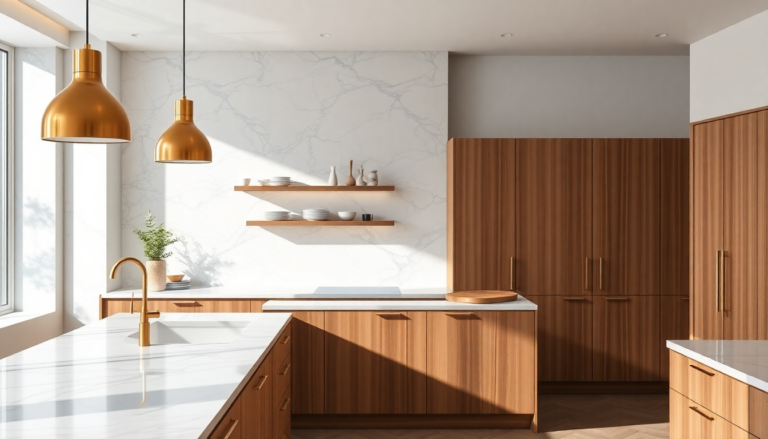Argomenti trattati
Step into a gorgeous kitchen, and you might find your eyes drawn to the stunning finishes—the intricate Calacatta Viola marble, the chic unlacquered brass fixtures, and the elegant DeVol cabinetry. However, without the right lighting, even the most exquisite design can fall short. The truth is, poor lighting can overshadow all your hard work and investment. It plays a crucial role, not only in style but also in safety; after all, good lighting can mean the difference between finely dicing an onion and a trip to the emergency room.
Creating a balanced lighting plan
When planning your kitchen lighting, remember that it’s not just about brightness; it’s about achieving a harmonious balance. According to designer Stefani Stein, layering different types of light is essential for a functional yet aesthetically pleasing space. She advises against relying solely on recessed ceiling lights. Instead, mix various sources, including pendant lights, flush mounts, and sconces, along with under-cabinet lighting. For an added touch of personality, consider incorporating a vintage table lamp in a strategic spot. And don’t forget, dimmers are a game changer—every area, even those meant for work, can benefit from a touch of ambiance!
Smart lighting for modern kitchens
Modern kitchens can also benefit from smart lighting controls. This feature is not just about convenience; it’s about creating the perfect atmosphere at the touch of a button or a simple voice command. Whether you’re whipping up dinner or enjoying a casual drink, you can set the lighting to match the moment. Imagine a “Cooking” scene with bright, focused lights over your prep areas, then switching to a “Dining” scene that dims the overheads and warms up the atmosphere, transforming your space into a cozy bistro vibe.
Rethinking recessed lights
While recessed lights have their advantages, they don’t have to dominate your ceiling. Today’s designers are taking a fresh approach. Instead of a monotonous grid of downlights, consider surface-mounted cylinders, flush mounts, or sleek monopoints. These fixtures provide a more architectural look and can be directed precisely where you need illumination, whether it’s highlighting artwork or illuminating a cutting board. Interior designer Nina Freudenberger suggests using more surface-mounted fixtures to give your ceiling a more playful character rather than a purely utilitarian feel. She also highlights the resurgence of under-counter lighting for added versatility and flair.
Highlighting key areas
While countertops are often the focus for lighting, don’t overlook other important areas in your kitchen. Kitchen designer Taylor Farrell emphasizes the need to think about lighting from the inside out. Consider illuminating the interiors of cabinets, under floating shelves, or even toe-kick lighting for a subtle glow. These little details can elevate the overall feel of the space, making it feel more intentional and polished. Lighting designer David Warfel agrees, noting that a tidy row of recessed lights over aisles might light up the floor nicely, but it can leave the humans in the shadows.
The importance of color temperature
Just as the perfect cooking temperature is crucial for a steak to achieve that ideal medium rare, the color temperature of your kitchen lighting matters just as much. Measured in Kelvins (K), this metric determines how warm or cool the light appears and is vital for maintaining a cozy kitchen atmosphere. Interior designer Elaine Bauer Brooks recommends using dimmable LEDs in the 2700K to 3000K range. Anything cooler can give your kitchen a sterile feel, so aim for warmth that mimics the late afternoon sun, creating an inviting vibe.

